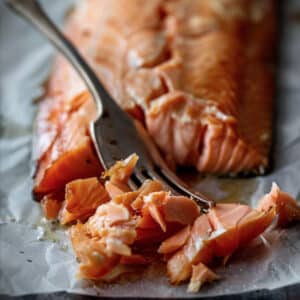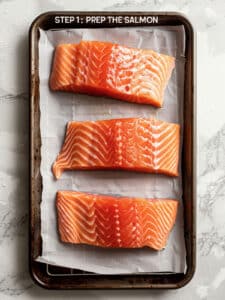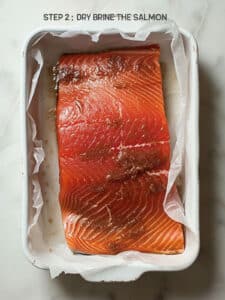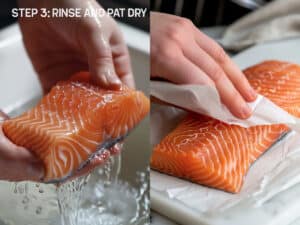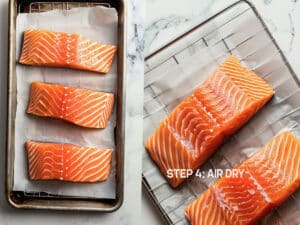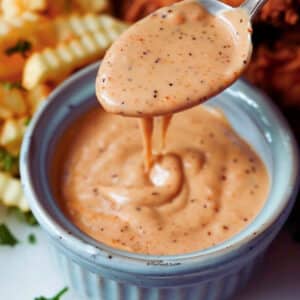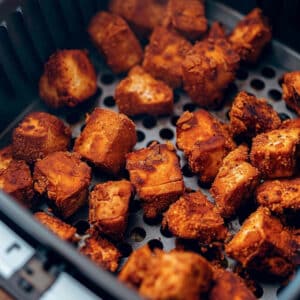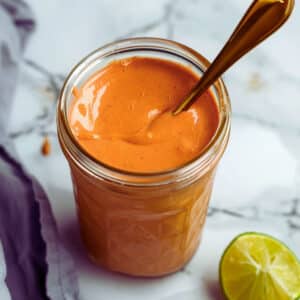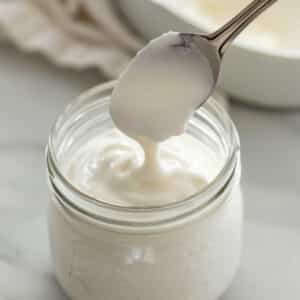I used to think making hot smoked salmon at home was complicated – for professionals only! But once I tried it, I was hooked. It's simpler than you think, and the flavor payoff is immense. Think tender, flaky fish with a kiss of smoke… perfect for snacking, brunching, or impressing guests. This recipe got you covered, so let's get smoking!

Ingredients Needed
- Salmon: This recipe lets you explore the world of salmon! Consider these options:
- Wild: King, sockeye, coho – each offers rich flavor and beautiful color. Opt for sustainable sources.
- Farmed: Responsibly-farmed Atlantic salmon is widely available and a good choice for this recipe.
- Skin-On: Recommended for easier handling during smoking and a delicious crispy texture.
- Brown Sugar: Light brown sugar provides the perfect level of sweetness for your dry brine. While smoking, it caramelizes subtly, adding depth without overpowering the salmon's natural flavor.
- Kosher Salt: Kosher salt is non-negotiable for smoked salmon. It offers pure flavor and its coarse texture is ideal for brining. Table salt has additives that negatively impact taste and its finer grains can over-salt your fish. Stick with brands like Morton or Diamond Crystal.
Optional Enhancements
- Sweeteners: Experiment with honey, molasses, or agave nectar for a unique flavor profile.
- Spice Blends: Explore pre-made spice mixes specifically for seafood or create your own signature blend.
- Liquid Smoke: Use sparingly to add a smoky note if you don't have a smoker. It can be overpowering, so a little goes a long way. Click for liquid smoke on Amazon
Spices and Herbs
- Black pepper (whole or cracked)
- Garlic powder or onion powder
- Fresh herbs (dill is classic, but explore with rosemary, thyme, etc.)
- Citrus zest (lemon, orange)
- Aromatics: Bay leaves, juniper berries (careful, a little goes a long way), whole cloves
Wood Choices:
- Alder: The go-to for smoked salmon. Mild, slightly sweet, complements all salmon types.
- Apple: Adds a subtle fruity sweetness, excellent with richer salmon like King or Coho.
- Cherry: Imparts a delicate sweetness and a beautiful rosy color to the salmon.
- Hickory: Brings a bolder, assertive smokiness. Pair with strong-flavored fish or use in combination with milder woods.
- Mesquite: Very strong and smoky. Use sparingly and consider mixing with a milder wood.
Step by Step instructions
Prep the Salmon. Check your salmon for pin-bones and remove them using needle-nose pliers or specialty fish tweezer.
Trim any excess fat for a cleaner presentation, if desired.
For even smoking, cut large fillets into portions of similar thickness.
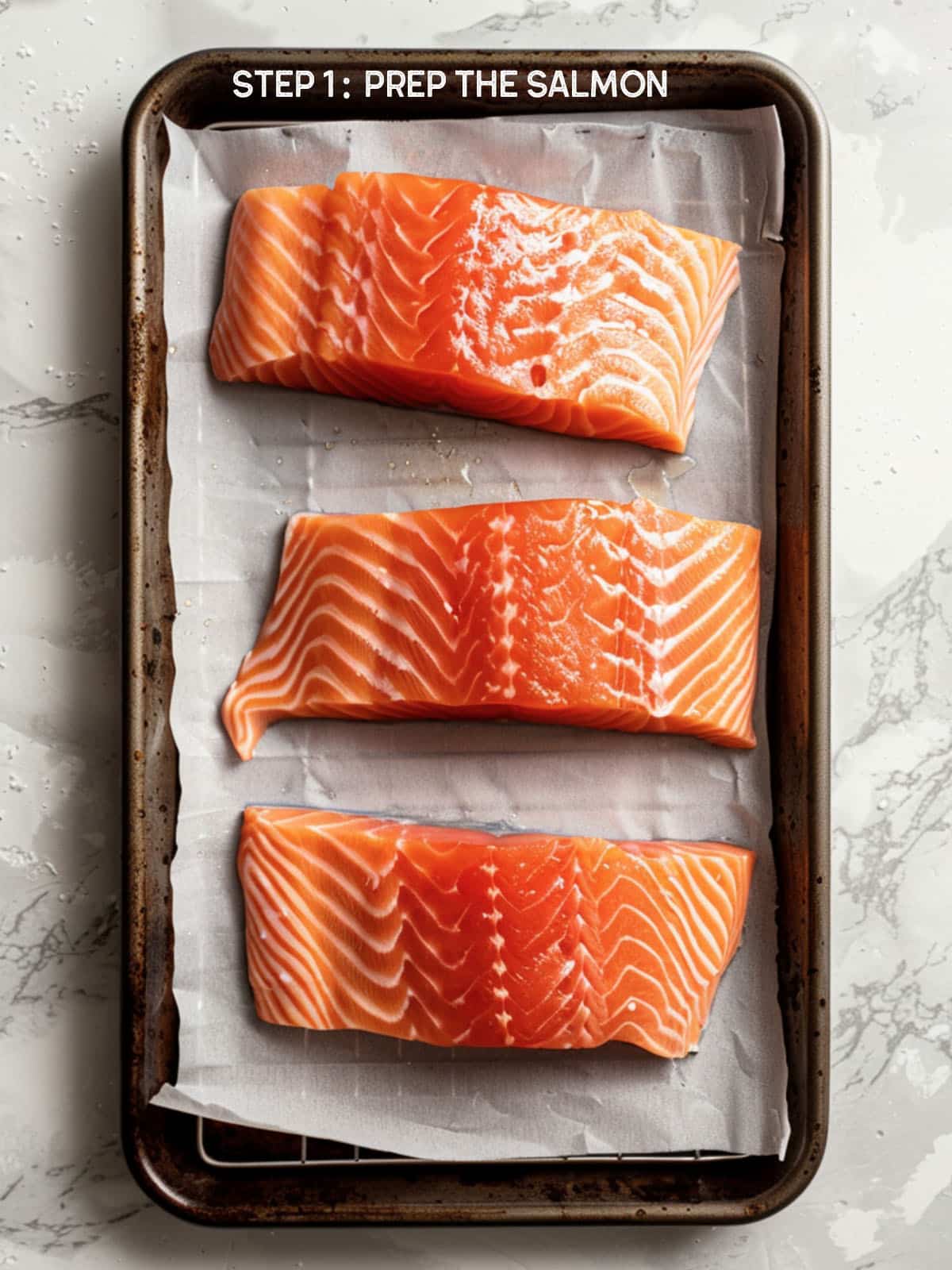
Dry Brine. In a small bowl, combine kosher salt and light brown sugar. For a basic brine, aim for a 1:1 ratio by volume.
Rub the dry brine mixture generously over all sides of the salmon filet(s).
Place the salmon in a non-reactive dish (glass, stainless steel, or food-safe plastic), cover with plastic wrap, and refrigerate for 24 hours.

Rinse & Pat Dry. Rinse the brined salmon thoroughly under cold water to remove excess salt and sugar.
Pat the salmon completely dry with paper towels. This is essential for proper pellicle formation.
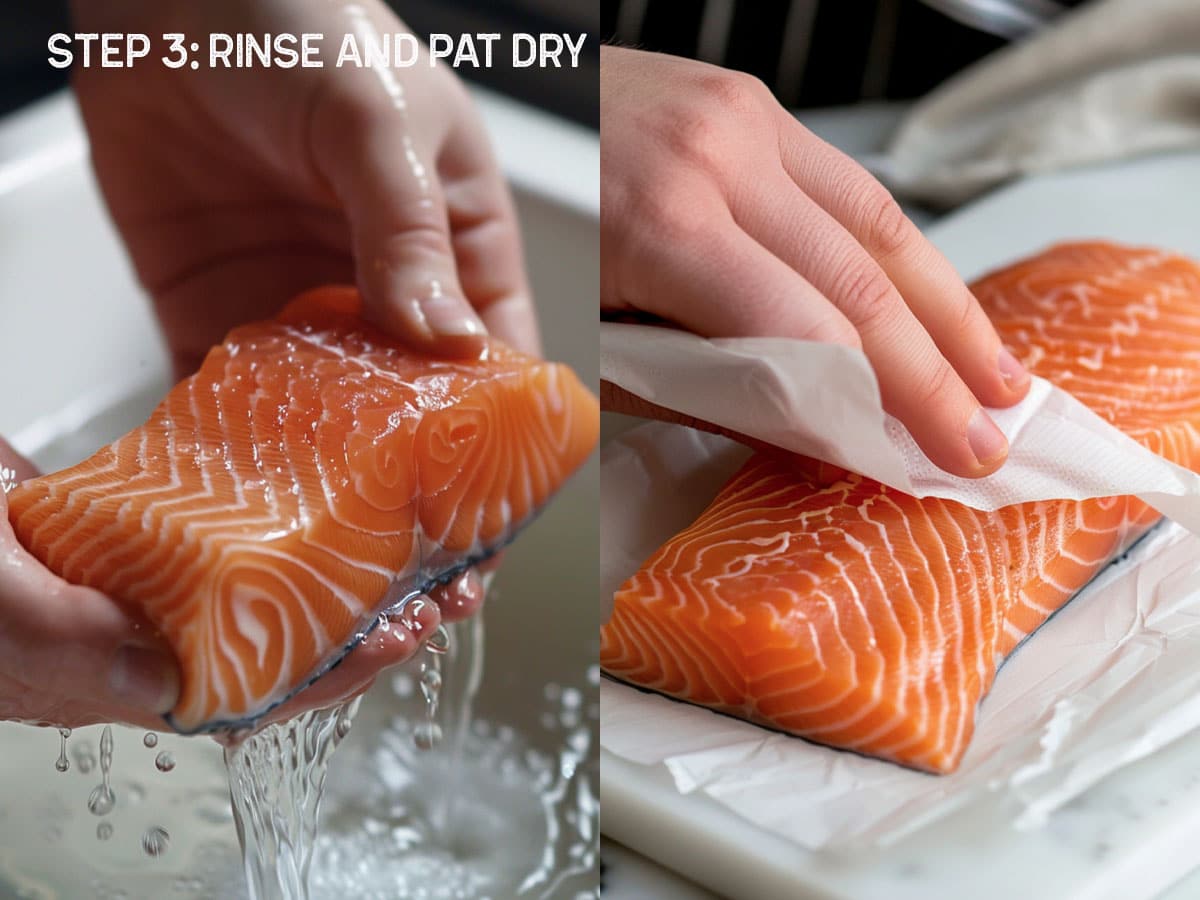
Form the Pellicle. Place the salmon, skin-side down, on a wire rack set over a rimmed baking sheet.
Let the salmon air-dry, uncovered for 2-4 hours, then you can place it inside the fridge until you're ready to smoke. The surface will become slightly tacky and shiny – this is the pellicle, which helps smoke adhere for maximum flavor.
Worried about your fish spoiling during the drying process?
Don't be! The salt from your brine acts as a preservative. This essential drying step (in a cool, breezy place) forms a protective pellicle that traps moisture, enhances smoke flavor during cooking, and helps the smoke stick. Once the pellicle has formed, you can refrigerate for a few hours before smoking if needed.
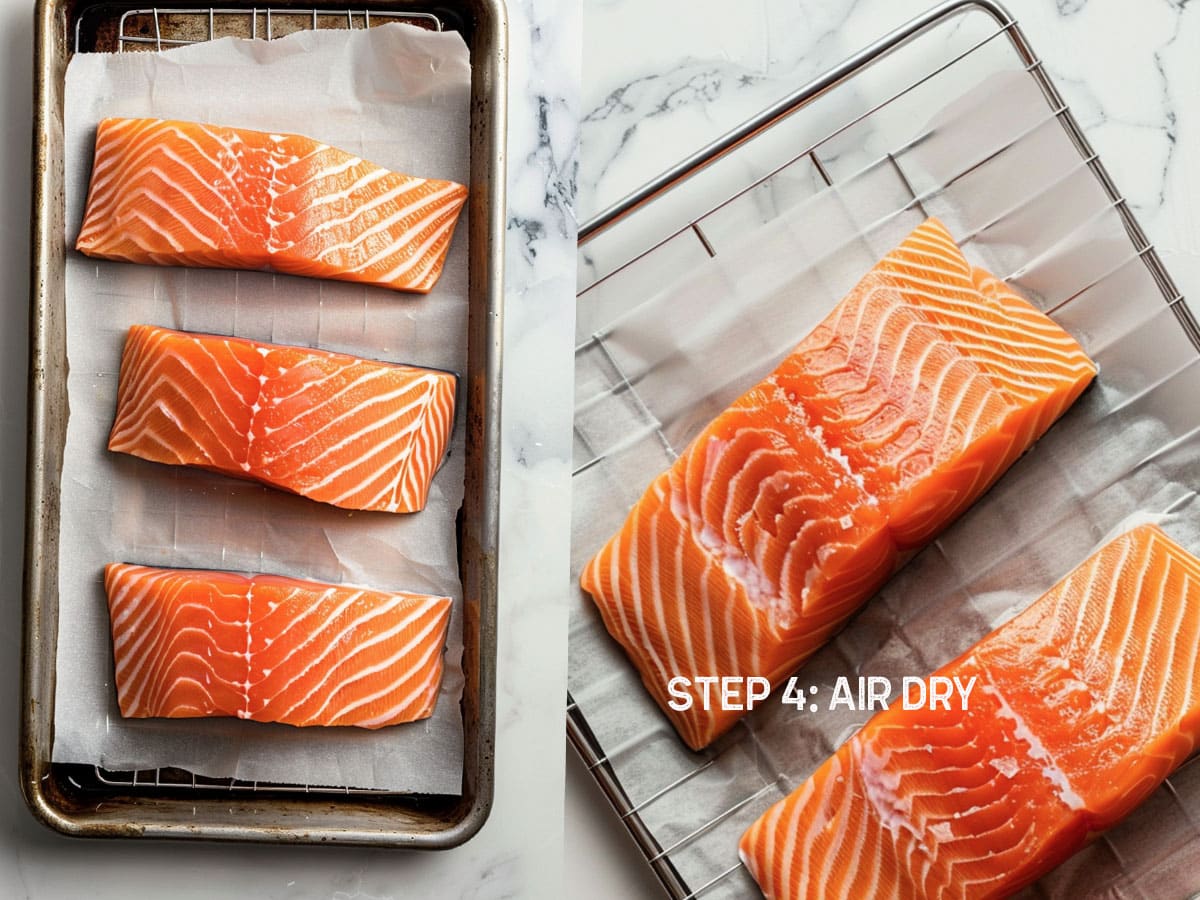
Prep Your Smoker. Preheat your smoker to 150°F (65°C). Choose a mild wood like alder, apple, or cherry for a flavor that complements the salmon.
Slick some Oil. Lightly oil the skin of your fish to prevent it from sticking to the smoker rack. Remember, even with hot smoking, start with a low fire and gradually increase the temperature. A sudden temperature spike can cause unsightly albumin buildup (white substance) on your fish.
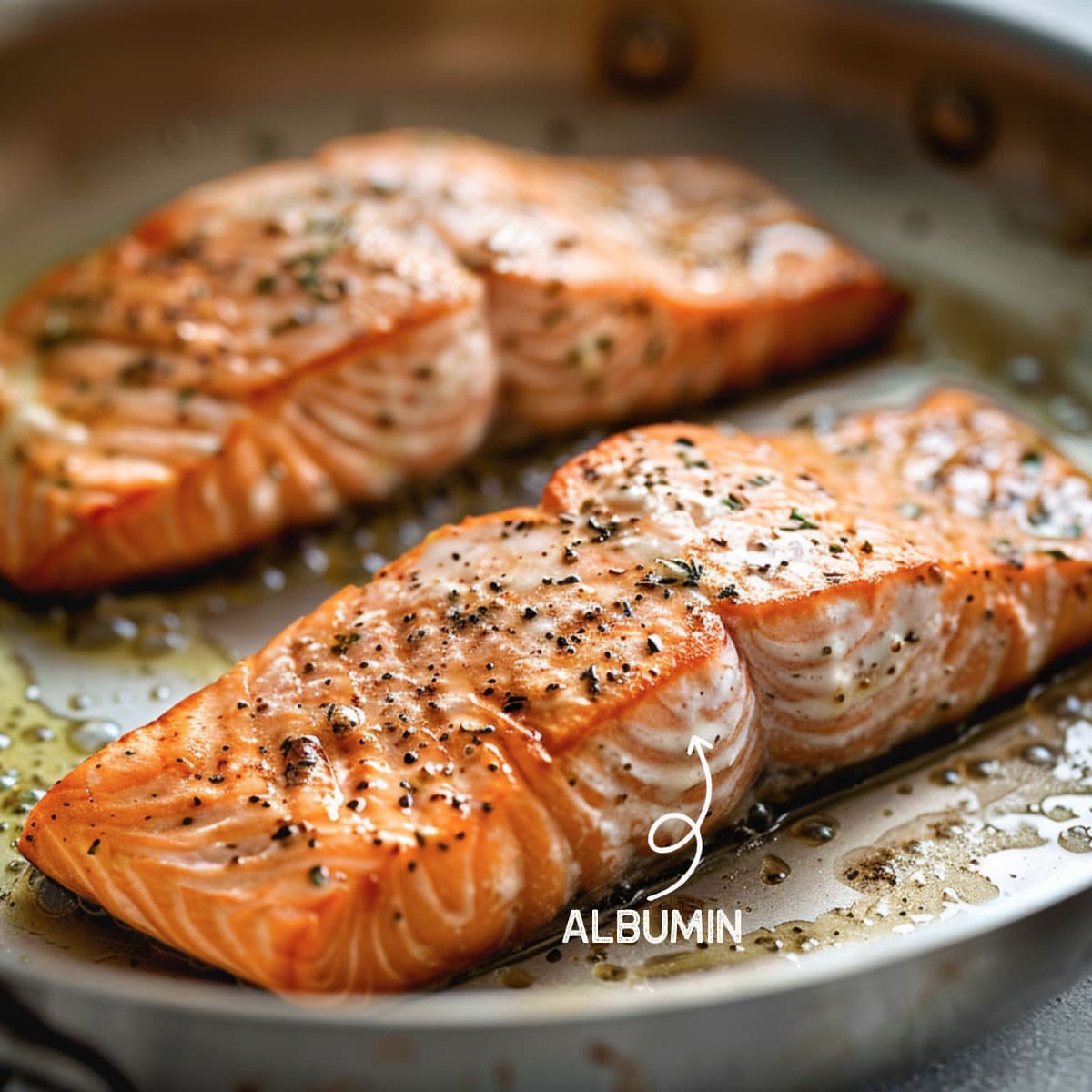
Smoke. Place the salmon directly on the smoker grates, skin-side down.
Maintain a consistent smoker temperature in the 130°F-150°F (55°C-65°C) range.
Smoke until the salmon reaches an internal temperature of 145°F (63°C), approximately 3 hours. Use a probe thermometer for accurate doneness.
Smoking is about finding the right balance. A water pan is your best friend for keeping temperatures low. If your smoker tends to get fiery, toss some ice cubes in the pan for extra control.
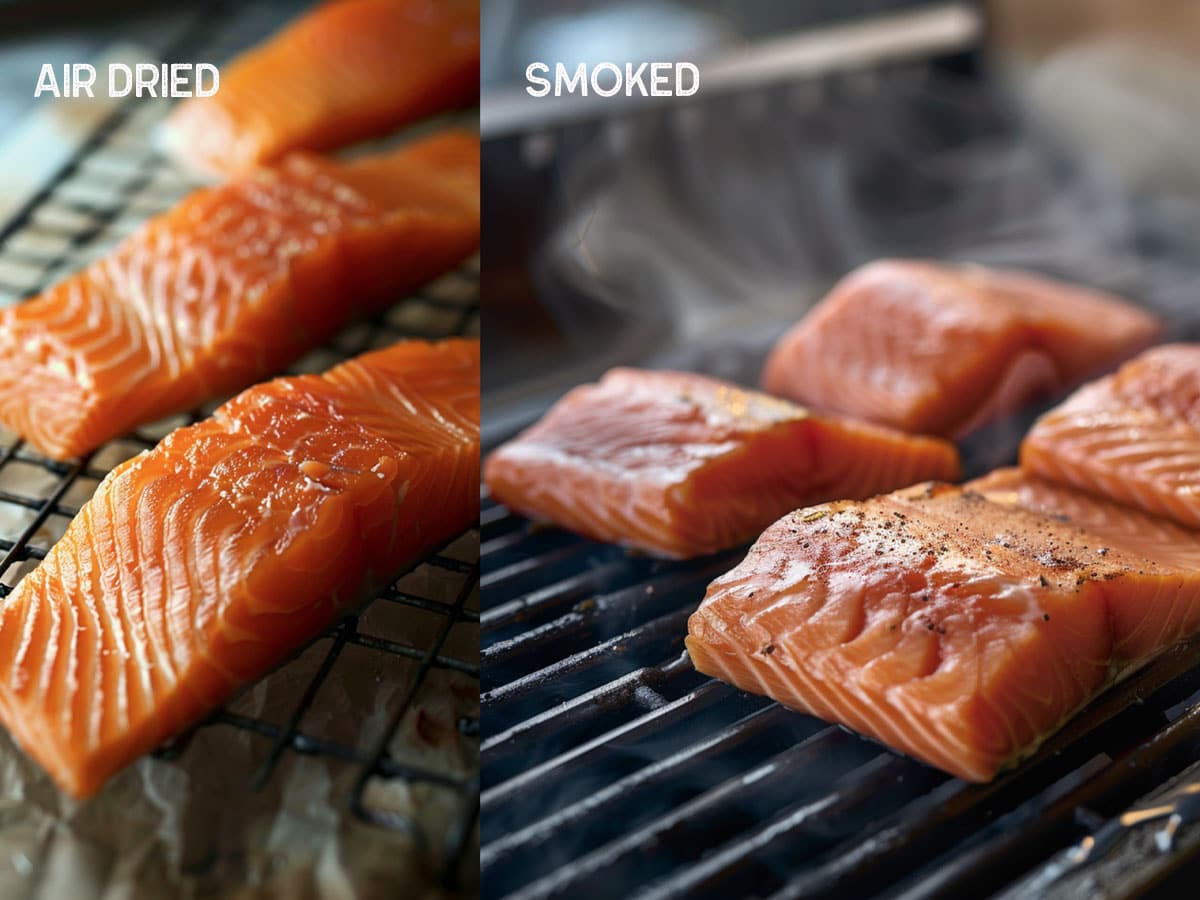
Baste the Salmon. After the first hour in the smoker, it's time to start basting! Use birch or maple syrup, even honey works, and baste about every hour. This adds a delicious touch and also helps manage that white stuff (albumin) that can sometimes appear. A little bit is normal, so don't panic!
Don't skip the resting period! Let your smoked fish cool on a rack for an hour before refrigerating. This enhances flavor and texture. In the fridge, wrapped in plastic, it keeps for 10 days. Vacuum-seal for 3 weeks, or freeze for up to a year.
Extra Tips:
Brine Time: Adjust brining time slightly based on fillet thickness (longer for thicker pieces).
Pellicle Power: The pellicle enhances smoke flavor, but your salmon will still be delicious if you're short on time.
Flavor Exploration: Customize your dry brine by adding spices, herbs, or a splash of citrus zest.
Albumin: The Science Behind the White Mess

Albumin is a protein naturally present in fish muscle. When salmon is cooked, especially at high temperatures, the muscle fibers contract and squeeze out some of this protein. In the case of hot smoking, if the temperature gets too high too quickly, these proteins solidify rapidly and appear as a white, creamy substance on the surface of the fish.
Why is Albumin Undesirable?
There are two main reasons why excess albumin is undesirable:
- Appearance: A large amount of albumin makes the finished smoked salmon look less appealing.
- Texture: Overcooked fish, often due to high heat, can be drier and less flavorful. Albumin buildup can be an indicator of this overcooking.
How to Avoid Albumin Buildup:
There are two key steps to prevent excessive albumin release:
- Pellicle Formation (Step 2): Drying the brined salmon in a cool, breezy place allows a thin, protective layer called a pellicle to form on the surface. This pellicle helps trap moisture and prevents the muscle fibers from squeezing out too much albumin during smoking.
- Gradual Temperature Increase (Step 4): Starting with a low heat and gradually raising the smoker temperature allows the salmon to cook gently. This prevents the muscle fibers from contracting too quickly and releasing excessive albumin.
A Little Albumin is Okay:
It's important to note that a small amount of albumin release is normal during hot smoking. You might see a slight white sheen on the finished product. This is nothing to worry about and doesn't necessarily affect the taste or safety of the fish.
What to Do if You Get Albumin Buildup:
If you do end up with a lot of albumin on your smoked salmon, don't despair! Here are a couple of options:
- Flake it for Salmon Salad: The creamy texture of albumin can actually be masked by mayonnaise in a salmon salad recipe.
- Enjoy it Anyway: While not ideal in terms of appearance, the salmon might still be perfectly safe and flavorful to eat despite the albumin.
Selecting Salmon
- Types for Smoking:
- King (Chinook): Highest fat content, rich, buttery flavor. Ideal for both hot and cold smoking.
- Sockeye: Deep red flesh, firm texture, assertive flavor. Excellent for both smoking methods.
- Coho (Silver): Milder flavor, medium fat content. Well-suited for both hot and cold smoking.
- Atlantic: Primarily farm-raised, milder flavor, softer texture. Better for cold smoking.
- Freshness is Key:
- Appearance: Look for vibrant colored flesh, firm texture, and a moist sheen. Avoid salmon that looks dull, bruised, or has gaps in the flesh.
- Smell: Fresh salmon should have a mild, slightly briny ocean scent. Steer clear of any strong fishy or ammonia-like odors.
- Touch: The flesh should spring back when lightly pressed. Avoid fish that feels mushy or leaves an indentation.
- Wild vs. Farmed:
- Wild Salmon: Caught in natural habitats. Typically richer in flavor, firmer texture, and leaner compared to farmed salmon. Consider sustainability and potential for higher levels of beneficial Omega-3 fatty acids.
- Farmed Salmon: Raised in controlled environments. Often more readily available and less expensive. Look for certifications that indicate responsible farming practices (e.g., ASC, BAP).
Important Considerations:
- Size & Thickness: Choose fillets at least 1-inch or 1.5 inch thick for even smoking. Ask your fishmonger to portion larger salmon sides accordingly.
- Skin-On or Off: Both options can be smoked. Skin-on may aid in maintaining moisture.
Preparation Essentials
- Trimming & Pin-Bones
- Why It Matters: Removing excess fat and pin-bones ensures even smoking, a pleasant texture, and reduces the risk of off-flavors.
- Step-by-Step:
- Inspect: Lay your salmon fillet skin-side down. Run your fingers along the flesh to feel for pin-bones, which run diagonally towards the center.
- Remove Pin-Bones: Use needle-nose pliers or specialty fish tweezers. Grasp firmly at the exposed end and pull out at a slight angle.
- Trim Excess Fat: Using a sharp knife, trim fat around the edges along with any thin belly flap or dark bloodline areas.
Brining Techniques
- Why Brine?
- Flavor: Infuses the salmon with salt and other seasonings, enhancing depth of flavor.
- Moisture: Helps retain moisture during the smoking process, preventing dry, overcooked fish.
- Texture: Contributes to a tender, flaky texture in the finished smoked salmon.
- Dry Brine
- Process: A mixture of salt, sugar, and other dry seasonings is rubbed directly onto the salmon. The salmon's own moisture draws out the flavors.
- Best For: Thicker cuts of salmon, when time is limited, or if you prefer a more concentrated flavor.
- Wet Brine
- Process: Involves submerging the salmon in a solution of salt, sugar, water, and often additional flavorings.
- Best For: Ensures even flavor penetration, allows for more flavor customization with herbs and aromatics, ideal for thinner salmon portions.
Key Considerations
- Brine Time:
- Dry Brine: Typically 6-12 hours in the refrigerator.
- Wet Brine: Varies based on thickness, but 1-4 hours is a good starting range. Over-brining can make the fish overly salty or mushy.
- Ratio Basics:
- Dry Brine: Start with 1 tablespoon of salt per pound of salmon. Adjust sugar and other seasonings to taste.
- Wet Brine: A basic ratio is 1 tablespoon salt per cup of water.
- Rinse & Dry: After brining (both methods), rinse the salmon briefly with cold water and pat it completely dry with paper towels. This prevents excess saltiness and helps form the pellicle (a tacky surface for smoke to adhere to).
Storage Solutions
Refrigeration:
- Proper Wrapping:
- Vacuum Sealed: The ideal method for maximum freshness.
- Tightly Wrapped: If no vacuum sealer, wrap salmon in parchment paper or plastic wrap, then in a layer of foil to limit air exposure.
- Placement: Store in the coldest part of your refrigerator, typically the back of the bottom shelf.
- Safe Duration:
- Hot-Smoked: Up to 10 days when properly wrapped, 3 weeks if vacuum-sealed.
- Cold-Smoked: Up to 2 weeks due to the curing process.
Freezing:
- Freezing
- Best Practices:
- Freeze in Portion Sizes: Divide salmon into convenient amounts for future use.
- Tightly Wrap: Use freezer-safe bags or vacuum seal for optimal protection.
- Label and Date: Note the type of salmon (smoked/unsmoked) and freeze date.
- Safe Duration: Up to 3 months for best quality.
- Impact on Texture: Freezing and thawing can make the texture slightly softer, but it's still delicious in dips, spreads, chowders, etc.
- Best Practices:
- Thawing Frozen Smoked Salmon:
- Always thaw in the refrigerator overnight for best results and food safety.
- Avoid thawing at room temperature.
Serving Suggestions
Breakfast & Brunch Ideas
- The Classic Bagel: Cream cheese, smoked salmon, thinly sliced red onion, capers, and a squeeze of lemon. The perfect balance of savory, creamy, and tangy.
- Smoked Salmon Eggs Benedict: Swap out the Canadian bacon for luxurious smoked salmon.
- Omelets & Frittatas: Crumble smoked salmon into your egg mixture for a flavor boost. Pair with herbed goat cheese and chives.
- Scrambled Eggs with a Twist: Top creamy scrambled eggs with smoked salmon and a sprinkle of fresh dill.
- Avocado Toast Upgrade: Layer mashed avocado with smoked salmon, a dollop of crème fraîche, and a sprinkle of Everything Bagel seasoning.
Beyond Breakfast
- Appetizer Star: Create elegant canapes with toast points, spreadable cheese, and smoked salmon.
- The Ultimate Salad Topping: Flake smoked salmon over mixed greens, pasta salad, potato salad, or substantial grain bowls.
- Sandwich Sensation: Try smoked salmon instead of tuna in a salad sandwich, or pair it with cream cheese, cucumber, and watercress on whole-grain bread.
- Snack Attack: Serve with crackers, whole-grain bread, crudités, and flavorful dips like dill cream cheese or whipped feta.
Full Recipe
Hot Smoked Salmon Recipe
Pin RecipeEquipments:
- smoker
- Alder (wood chips)
- thermometer
- racks
Ingredients:
- 3 pieces Salmon fillets (1.5 inch thick)
- 1 cup brown sugar
- 1 cup Kosher Salt
Flavor Builders (optional)
Sweeteners
- honey, molasses, or agave nectar for a unique flavor profile.
Spice Blends:
- pre-made spice mixes
Liquid Smoke:
- Use sparingly to add a smoky note if you don't have a smoker.
Instructions:
- Prep the Salmon. Check your salmon for pin-bones and remove them using needle-nose pliers or specialty fish tweezers. Trim any excess fat for a cleaner presentation, if desired. For even smoking, cut large fillets into portions of similar thickness.
- Dry Brine. In a small bowl, combine kosher salt and light brown sugar. For a basic brine, aim for a 1:1 ratio by volume. Rub the dry brine mixture generously over all sides of the salmon filet(s). Place the salmon in a non-reactive dish (glass, stainless steel, or food-safe plastic), cover with plastic wrap, and refrigerate for 24 hours.
- Rinse & Pat Dry. Rinse the brined salmon thoroughly under cold water to remove excess salt and sugar. Pat the salmon completely dry with paper towels. This is essential for proper pellicle formation.
- Form the Pellicle. Place the salmon, skin-side down, on a wire rack set over a rimmed baking sheet. Let the salmon air-dry, uncovered, then put in the refrigerator for 2-4 hours. The surface will become slightly tacky and shiny – this is the pellicle, which helps smoke adhere.Worried about your fish spoiling during the drying process? Don't be! The salt from your brine acts as a preservative. This essential drying step (in a cool, breezy place) forms a protective pellicle that traps moisture, enhances smoke flavor during cooking, and helps the smoke stick. Once the pellicle has formed, you can refrigerate for a few hours before smoking if needed.
- Slick some Oil. Lightly oil the skin of your fish to prevent it from sticking to the smoker rack. Remember, even with hot smoking, start with a low fire and gradually increase the temperature. A sudden temperature spike can cause unsightly albumin buildup (white substance) on your fish.
- Prep Your Smoker. Preheat your smoker to 150°F (65°C). Choose a mild wood like alder, apple, or cherry for a flavor that complements the salmon.
- Smoke the Salmon. Place the salmon directly on the smoker grates, skin-side down. Maintain a consistent smoker temperature in the 130°F-150°F (55°C-65°C) range. Smoke until the salmon reaches an internal temperature of 145°F (63°C), approximately 3 hours. Use a probe thermometer for accurate doneness.Smoking is about finding the right balance. A water pan is your best friend for keeping temperatures low. If your smoker tends to get fiery, toss some ice cubes in the pan for extra control.
- Baste the Salmon. After the first hour in the smoker, it's time to start basting! Use birch or maple syrup, even honey works, and baste about every hour. This adds a delicious touch and also helps manage that white stuff (albumin) that can sometimes appear. A little bit is normal, so don't panic!
- Let it Rest. Don't skip the resting period! Let your smoked fish cool on a rack for an hour before refrigerating. This enhances flavor and texture. In the fridge, wrapped in plastic, it keeps for 10 days. Vacuum-seal for 3 weeks, or freeze for up to a year.
Notes:
Extra tips:
- Brine Time: Adjust brining time slightly based on fillet thickness (longer for thicker pieces).
- Pellicle Power: The pellicle enhances smoke flavor, but your salmon will still be delicious if you're short on time.
- Flavor Exploration: Customize your dry brine by adding spices, herbs, or a splash of citrus zest.
Selecting salmon:
- Types for Smoking:
- King (Chinook): Highest fat content, rich, buttery flavor. Ideal for both hot and cold smoking.
- Sockeye: Deep red flesh, firm texture, assertive flavor. Excellent for both smoking methods.
- Coho (Silver): Milder flavor, medium fat content. Well-suited for both hot and cold smoking.
- Atlantic: Primarily farm-raised, milder flavor, softer texture. Better for cold smoking.
Preparation essentials
- Trimming & Pin-Bones
- Why It Matters: Removing excess fat and pin-bones ensures even smoking, a pleasant texture, and reduces the risk of off-flavors.
Step-by-Step:
- Inspect: Lay your salmon fillet skin-side down. Run your fingers along the flesh to feel for pin-bones, which run diagonally towards the center.
- Remove Pin-Bones: Use needle-nose pliers or specialty fish tweezers. Grasp firmly at the exposed end and pull out at a slight angle.
- Trim Excess Fat: Using a sharp knife, trim fat around the edges along with any thin belly flap or dark bloodline areas.
Nutrition Information:
Please note that all nutrition information are just estimates. Values will vary among brands, so we encourage you to calculate these on your own for most accurate results.

